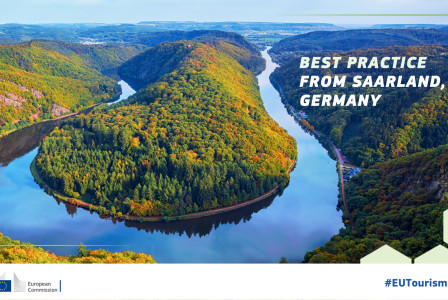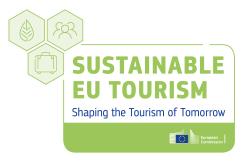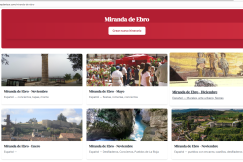Best practices
25 September 2025
Sustainable EU Tourism project - best practice: Saarland
Best practices
25 September 2025
Cultural tourism
Ecotourism
Health and medical tourism
+7 more
Login / create an account to be able to react
-
11

Saarland, Germany, has transformed from a former mining region into a sustainable tourism destination. Guided by a comprehensive climate protection strategy, destination certification, and EU cooperation projects, the region focuses on protecting its natural heritage while promoting responsible mobility, visitor awareness, and innovation in tourism experiences
Sustainable EU Tourism project
Topics
Germany
Destination Management & Marketing Organisations
Local Authorities
-
Specific types of tourism
-
-
Cultural tourism
-
Ecotourism
-
Health and medical tourism
-
Rural tourism
-
-
Transition Pathway Strategic Areas
-
-
Best practices, peer learning and networking
-
Funding and support measures
-
Green Transition of Tourism Companies and SMEs
-
Sustainable mobility
-
Tourism strategies
-
-
Business activities
-
-
Other
-
Share
Saarland, Germany, has been recognised as a best practice by the Sustainable EU Tourism project for its successful transition from an industrial mining region to a sustainability-oriented tourism destination.
Over the past 20 years, tourism has become a key driver of economic development, with 3.2 million overnight stays in 2023 and more than 32 million daytrips in 2022, largely motivated by the region’s natural heritage.
To safeguard its landscapes against climate stress, floods, and overuse, Saarland implemented a comprehensive climate protection strategy aimed at achieving climate neutrality through the steps of avoiding, reducing, and compensating emissions. The destination obtained TourCert certification, embedding continuous improvement in sustainability across businesses, while raising awareness through workshops and stakeholder training.
Participation in EU projects further strengthened Saarland’s approach, testing nudging methods to encourage sustainable mobility and visitor behaviour. At the same time, regional funding programmes made sustainability a prerequisite for tourism companies applying for financial support.
Saarland experience highlights how regions with an industrial past can reorient themselves around climate action and nature-based tourism, offering a replicable model for sustainable destination management.
For more details on the key challenges the destination has faced and the solutions implemented to address them, please refer to the attached document.
Documents
Comments (0)
Related content
See also
Sustainable EU Tourism - Key challenges and best practices
- Categories
- Coastal, maritime and inland water tourism Cultural tourism Ecotourism +64 more
Platform for creating accessible and multilingual itineraries with voice assistant
- Categories
- Coastal, maritime and inland water tourism Cultural tourism Ecotourism +64 more
Sustainable tourism plastic reduction toolkit
- Categories
- Coastal, maritime and inland water tourism Cultural tourism Ecotourism +18 more





